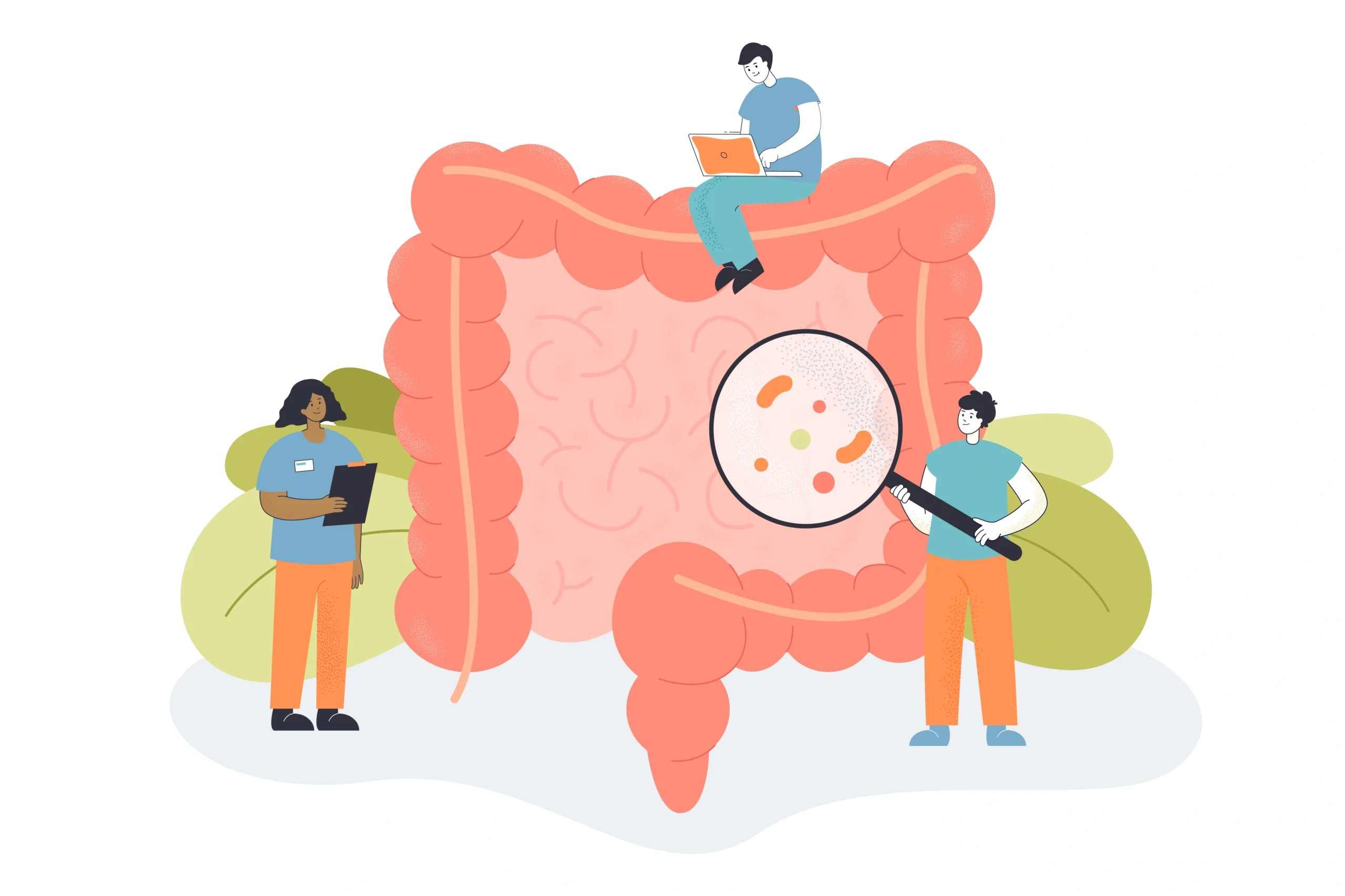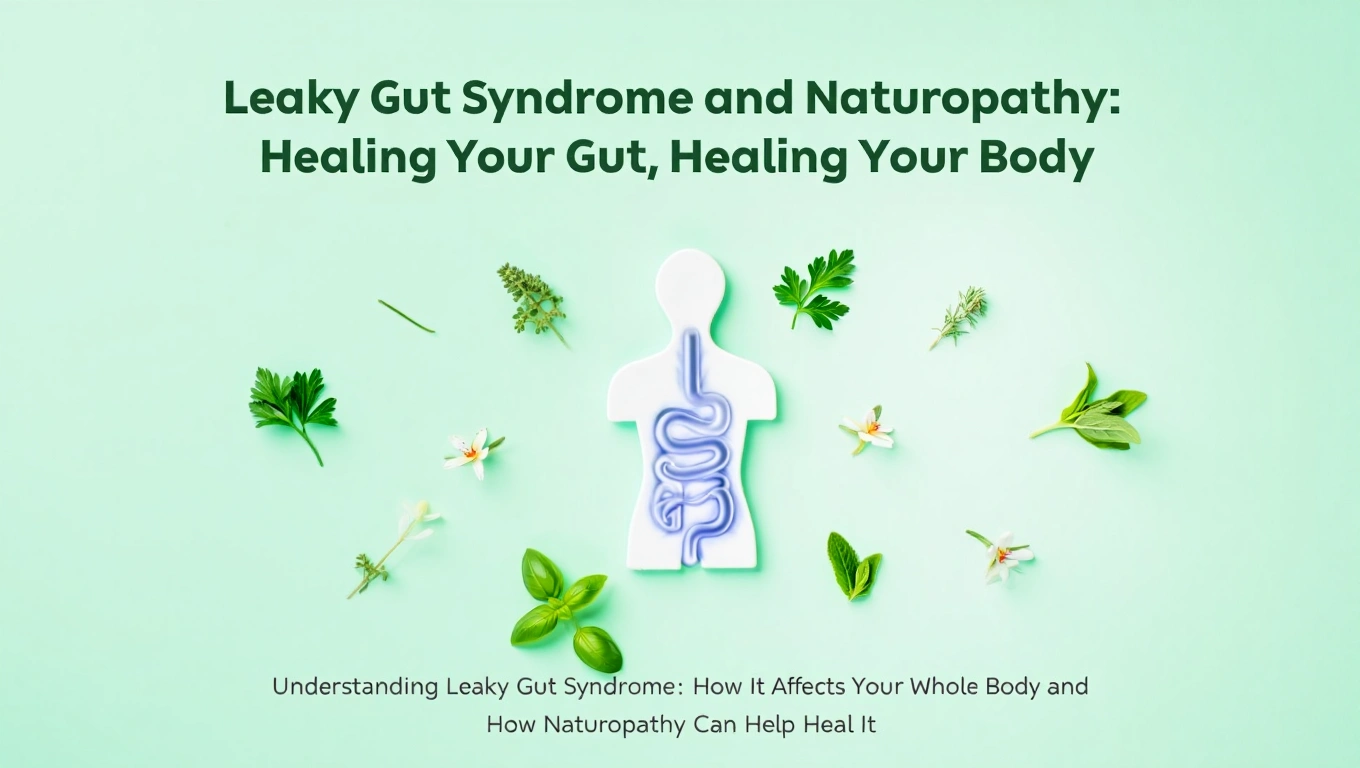Leaky Gut Syndrome and Naturopathy: Healing Your Gut, Healing Your Body
Understanding Leaky Gut Syndrome: How It Affects Your Whole Body and How Naturopathy Can Help Heal It
Breakfast sits fine. Lunch doesn’t. By early afternoon, your belly feels tight, focus drifts, and the to‑do list starts to glare back at you. People call it sensitivity or chalk it up to stress, but there’s another working explanation. The gut lining sometimes becomes more permeable than it should, allowing larger particles, toxins, or microbes to pass into the bloodstream. A process that contributes to what’s known as leaky gut syndrome and reflects deeper gut lining and microbiome imbalances
The clinical term is increased intestinal permeability, which refers to a weakened gut barrier that allows unwanted particles to pass through. The GI-MAP test provides a detailed assessment of gut bacteria, inflammation, and digestive function, helping identify factors that may contribute to this imbalance. What practitioners often observe is a multifactorial pattern where diet, commensal flora, poor sleep, a dysregulated stress response, and medications collectively modulate the delicate intestinal barrier.
When the barrier is compromised, your immune system becomes vulnerable to threats. A leaky gut naturopath targets the root contributors and improves how you break down food, rebalances beneficial bacteria, and supports the intestinal lining with key nutrients and recovery time. In this blog, you will get to understand what’s happening in your gut and find the root cause of leaky gut syndrome.
What Is Leaky Gut Syndrome?
The small intestine has one thin layer of cells joined by tight junctions. These junctions allow nutrients, electrolytes, and water to pass and keep larger particles out. The opening and closing of those junctions isn’t random. It’s guided by chemical messages from food, the microbiome, nerves, and immune cells. When the gut wall gets inflamed after an infection, a rough patch of stress, or months of highly processed food, those doors can loosen more often or for longer. This is called intestinal permeability.
More bacterial fragments and food particles brush against immune tissue that sits right beneath the lining, and the body responds (as it should) with a bit more vigilance. If that happens once, you barely notice. If it’s many times a day and on most days, you’ll feel it. Bloating after meals, fatigue that doesn’t match your effort, skin flare-ups, or a vague sense of being puffy and off.
How Leaky Gut Develops
It’s not a single culprit. More of a crowd.
- Chronic stress and cortisol: Sleep cuts short; meals get rushed; your body lives in go‑mode. Motility changes, mucus thins, and blood flow shifts.
- Inflammatory food pattern: A week of celebrations or travel, extra alcohol, sweets, and deep‑fried snacks nudges microbes toward species that irritate the lining. It’s the weekly average that matters.
- Dysbiosis: Stress and grab‑and‑go meals lower SCFA availability. That weakens the gut barrier and elevates mediators that are responsible for maintaining immune activation.
- Low digestive capacity: Not enough stomach acid or enzymes means larger food fragments linger where they don’t belong. Fermentation happens upstream; gas and pressure follow.
- Medications and exposures: certain antibiotics, NSAIDs, and also acid blockers are put to action for relief. Their side effects may cause thinning of the mucus and reshape the microbiome.
The point isn’t to fear normal life. It’s to notice patterns so you can choose lever points that actually move the needle.
How Leaky Gut Affects the Whole Body
Most immune cells that guard you live in or near your gut. When intestinal permeability rises, those cells get pinged more frequently by microbial fragments and food antigens.
The chemistry is protective, but if it repeats all day, it turns into background static. People describe sore, restless nights; morning stiffness that fades by noon, and energy that dips on a schedule – 1:30 p.m., almost like clockwork.
Brain fog, mood, and mental health
The gut and brain are in constant communication with each other. This pathway is facilitated by the vagus nerve and hormone signalling. Any irritation to the gut lining may blur cognitive steadiness. The effects can be felt in the form of losing focus in between or feeling oddly anxious post-meal.
Autoimmunity and chronic inflammation
Research links altered barrier function with autoimmune patterns. It’s a relationship, not a verdict. In people with the right genetics, repeated immune activation at the gut wall may be one of several nudges toward a flare. This is why gut‑steadying basics, diet quality, fibre and fermented foods, and targeted nutrients often sit next to conventional care in long‑term plans.
Skin and hormones
Your skin can reflect what’s happening in your gut. When the gut barrier becomes compromised, sometimes called increased intestinal permeability, it can trigger systemic inflammation that shows up as acne or eczema. Hormone metabolism also depends on the liver–gut connection. Certain gut bacteria produce enzymes that can reactivate estrogens, allowing them to recirculate. This may contribute to breakouts, PMS, and water retention.

Diagnosing Leaky Gut and Its Triggers
Leaky gut is a functional description, not a formal stand‑alone diagnosis. Thorough assessments may consist of the following:
- Comprehensive intake: timeline of infections, antibiotics, travel, high‑stress seasons, food patterns, and red flags (weight loss, blood in stool, fevers, severe pain).
- Targeted testing:
- The GI‑MAP Test or GI stool analysis can profile microbes and inflammation markers, which can help guide treatment.
- Zonulin can help better understand the severity of leaky gut if it exists. However, these values fluctuate and need cautious interpretation.
- Food sensitivity panels can provide us with clues; an elimination diet followed by reintroduction can help confirm sensitivities.
- SIBO Breath test – an underlying cause of leaky gut
- Celiac disease can contribute to elevated zonulin levels
Naturopathic Approaches to Healing Leaky Gut
The 4R framework
- Remove: Turn down the volume on irritants such as alcohol, ultra‑processed foods, and your personal suspects. Address infections or overgrowths if found. Tackle the one stressor you can actually change this month.
- Replace: Support digestion so the small intestine isn’t wrestling with half‑broken‑down meals. Depending on assessment, that may include betaine HCl, bile support, or a broad‑spectrum enzyme with the two largest meals.
- Reinoculate: Rebuild microbial diversity with a targeted probiotic, daily prebiotic fibres, and fermented foods. Diversity is the win, not a single “hero” strain.
- Repair: A few supplements pull extra weight: L‑glutamine, zinc carnosine, and omega‑3s help tissues heal. Collagen or gelatin supports the lining. Aloe, slippery elm, and DGL calm irritation. Turmeric and ginger offer gentle anti‑inflammatory support.
Healing herbs & nutritional support
- Demulcents: Slippery elm, marshmallow, liquorice root soothe and coat the intestines. People often feel less burning and fewer cramps within days.
- Anti‑inflammatory anchors: Omega‑3s, Omega-6s, curcumin, zinc carnosine, ginger, DGL, L-Glutamine
- Micronutrient basics: Vitamin D, magnesium, zinc, B‑vitamins, and iron as needed. Test, don’t guess.
- Duration: Most repair plans run 4–8 weeks.
Elimination diet & gut‑friendly foods
A personalized version works best.
- Phase 1 (3–4 weeks): Give your gut a break from refined & ultra-processed foods and alcohol. Also, if you have a suspected sensitivity to dairy or gluten, avoid these foods.
- Build your plate around plants and protein: Ideally, plan your meals ahead of time. To begin, choose some of your favourite non-starchy vegetables to fill half the plate. The rest can be one palm-sized portion of lean protein and a handful or whole grain carbohydrates.
- Everyday gut‑helpers: Fruits like pears, apples, berries, mango, and papaya can feed your beneficial gut flora. Also consider bone broth, chia, and flaxseeds. Greens are also essential. To add a dose of resistant starch, make use of cooled rice or potatoes and/or a green banana.
- Reintroduce slowly: Add one food back every three days and in small quantities. Watch for changes in digestion, energy, skin, and sleep. Keep what clearly agrees with you.
Probiotics for gut healing and microbiome restoration
Choose a quality multi‑strain probiotic and give it 30 days. You can also pair it with prebiotic supplements or foods. Think onions, leeks, garlic, asparagus, bananas, oats, lentils, and beans, if they can be tolerated. This fiber helps to increase short‑chain fatty acids that literally help tighten junctions and reduce inflammation in your digestive tract. Here’s a bonus tip: Saccharomyces boulardii is especially handy after antibiotics or for traveller’s diarrhea.
Stress and lifestyle support
No pill can overcome a nervous system that never stands down. Here are some Practical options, which can be applied right away.
- One minute of slow nasal breathing before meals (inhale for 4s, and exhale for 6s). This can help activate your parasympathetic nervous system (rest and digest system).
- Protect sleep: aim for a consistent window and a cool, dark room. You may notice improved hunger and satiety signalling.
- A ten‑minute walk after dinner can improve gut motility and glucose control.
- Gentle exercise (yoga, dance) and avoiding bright screens late at night and early in the mornings.
Success Stories — Personalized Healing in Action
Case 1: Chronic bloating and fatigue
A 38‑year‑old designer had a daily afternoon bloat and a 3 p.m. crash. Stool testing showed low beneficial bacteria and low pancreatic elastase. Her 12‑week plan included: enzymes with lunch/dinner, a multi‑strain probiotic, fermented foods, a pause on alcohol, additional supplements, and a four‑week elimination diet with measured re‑introductions. After 4 Weeks,: bloating was reduced by half. After 8 weeks, energy levels started increasing. After 12 Weeks: digestion was pretty much back to normal; probiotics were kept at three days a week; alcohol was reintroduced at a max of 3-4 drinks/week.
Case 2: Autoimmune flares
A 52‑year‑old with autoimmune joint pain tracked flares tied to poor sleep, food sensitivities, and poor meal choices. He started omega‑3s and curcumin, added a nightly walk, and used a yeast‑based probiotic for eight weeks. He kept most foods but tightened the weekday pattern and saved alcohol for one night of the week.
Flares softened and spread farther apart; he returned to swimming twice a week, which improved his sleep. Overall, his joint pain was reduced significantly after 8 weeks, and his quality of life improved.
When to Seek Professional Guidance
Unexplained weight loss, blood in the stool, high fever, and persistent vomiting are some symptoms you should not consider minor. Seek medical guidance immediately. For non-urgent symptoms that are persistent, collaborative care can be very beneficial.
Seek conventional guidance to exclude serious disease, followed by licensed naturopathic guidance for individualized nutrition, supplementation, and functional testing. At 8 Wellness, we focus on what’s underneath and on full‑body recovery, creating a plan that fits you, not the other way around.
At 8 Wellness, every plan is personalized. We identify the drivers behind your symptoms, support the gut-brain axis, and map a sustainable path forward. We offer thoughtful care, whole‑body results, and a partner who stays with you at each turn.


